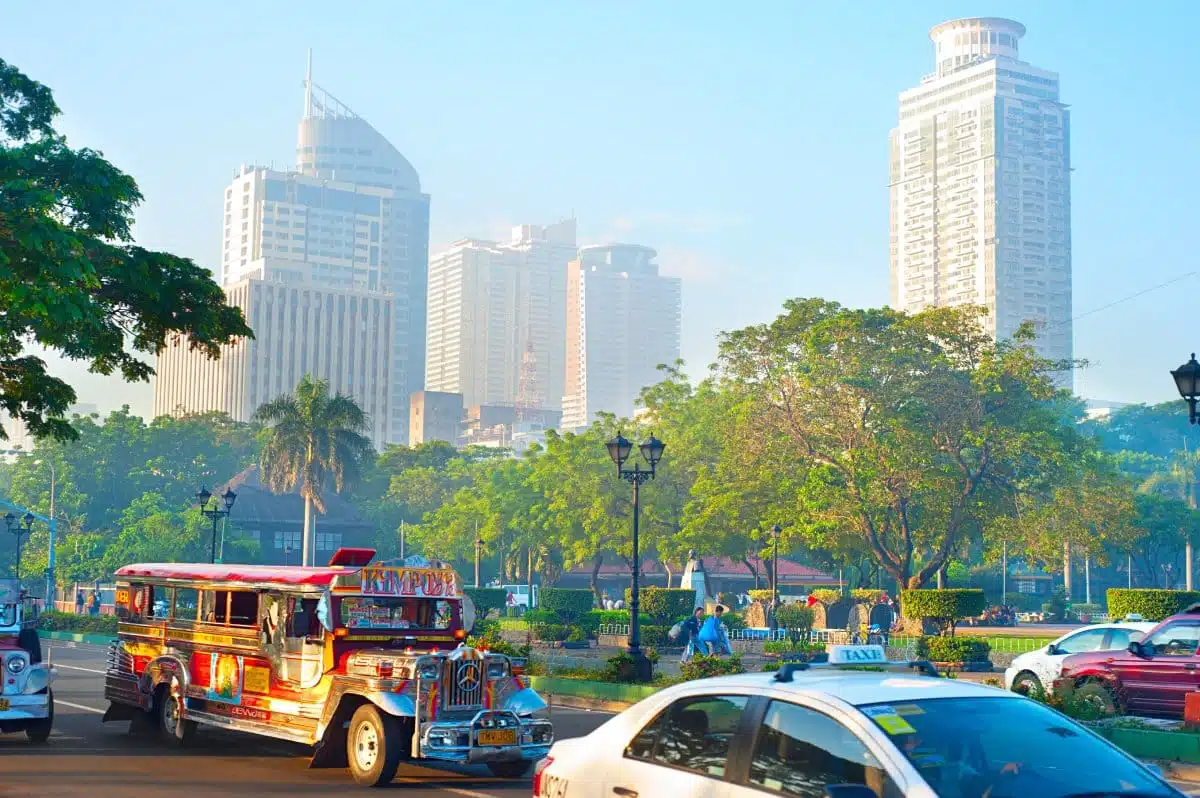Traveler Profile: Katie, UK
Location: Manila, Philippines
Time of Year: January
Travel Goals: Magic, history, adventure, shopping, and photography.
The Philippines, particularly the islands, beaches, and diving, had been on my bucket list forever. So, as I was in the country, I wanted to visit Manila, the capital city. The city is a vibrant metropolis that offers a unique blend of history, culture, and gastronomy. My guide will help travelers looking to immerse themselves in the magic of Manila within just one day. From Intramuros’s historic walls to Binondo’s bustling streets, each destination has been carefully selected to provide a comprehensive experience of the city’s soul. Follow this itinerary to explore Manila’s rich heritage, indulge in its culinary delights, and witness its modern-day vibrancy.
Breakfast at Recovery Food

Image Credit: Shutterstock / bonchan
You must start an adventure day with a good breakfast, so where better than Recovery Food? The restaurant presents a unique dining experience with diverse comfort foods catering to various tastes and preferences. Established by My Mamou Food Concepts, Inc., this casual restaurant chain serves dishes that evoke nostalgia and warmth, reminiscent of home-cooked Philippine meals. The menu is cleverly curated, including various options, from Asian-inspired hot noodle soups and home-style pressed sandwiches to comforting rice bowls. Complementing these hearty meals are freshly squeezed juices, providing a refreshing balance to the savory dishes.
Intramuros Exploration
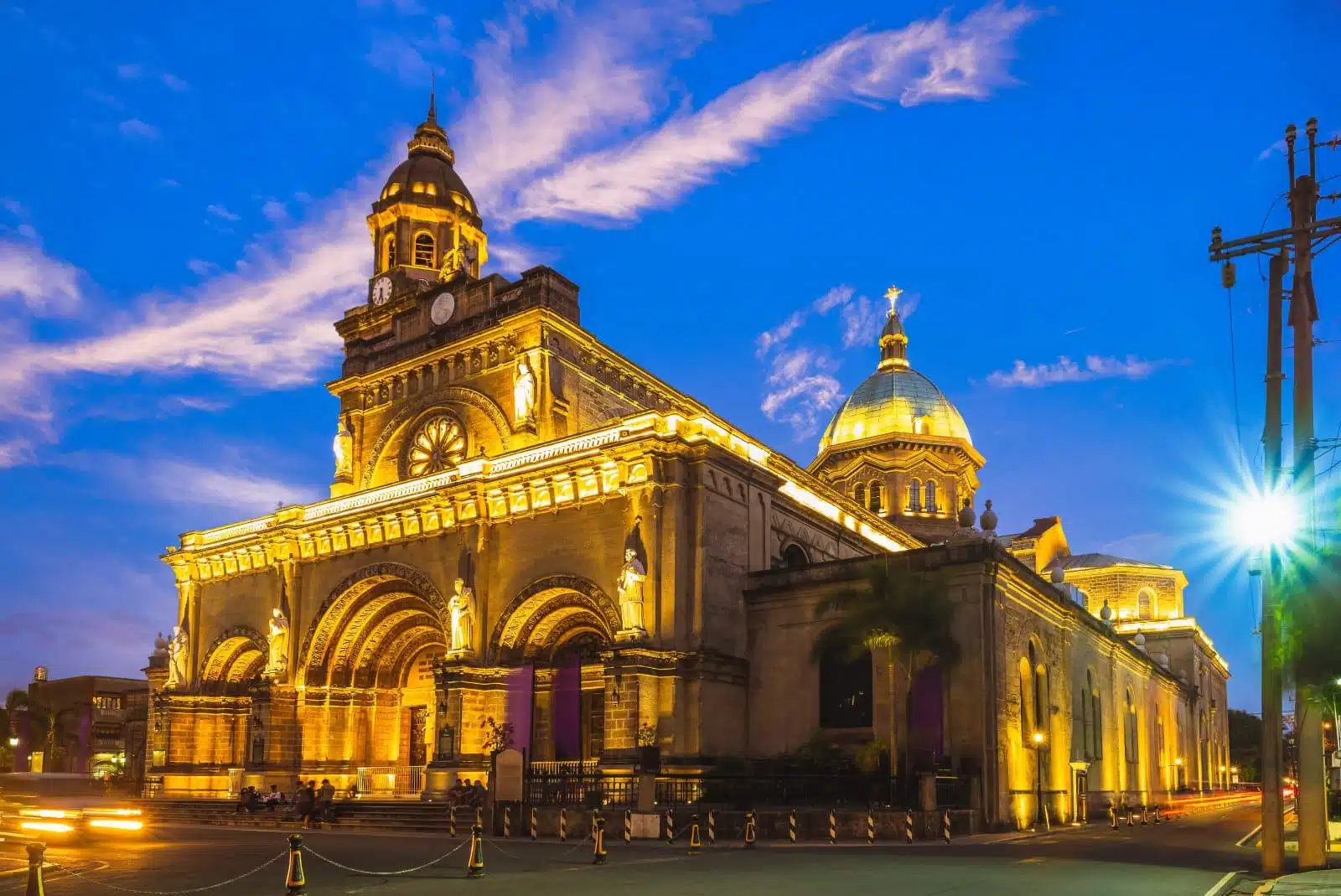
Image Credit: Shutterstock / Richie Chan
Intramuros, known as the “Walled City,” is the historical heart of Manila. Established in the late 16th century by the Spanish, it was the seat of government and religious authority during the colonial period. Today, Intramuros is a living museum with ancient walls, churches, and forts highlighting the city’s storied past. A walk through its cobblestone streets offers a glimpse into the architectural grandeur of the Spanish era, highlighted by landmarks such as Fort Santiago, San Agustin Church, and Manila Cathedral. These sites showcase exquisite colonial architecture and narrate the history of Manila through centuries of wars and natural calamities.
Fort Santiago
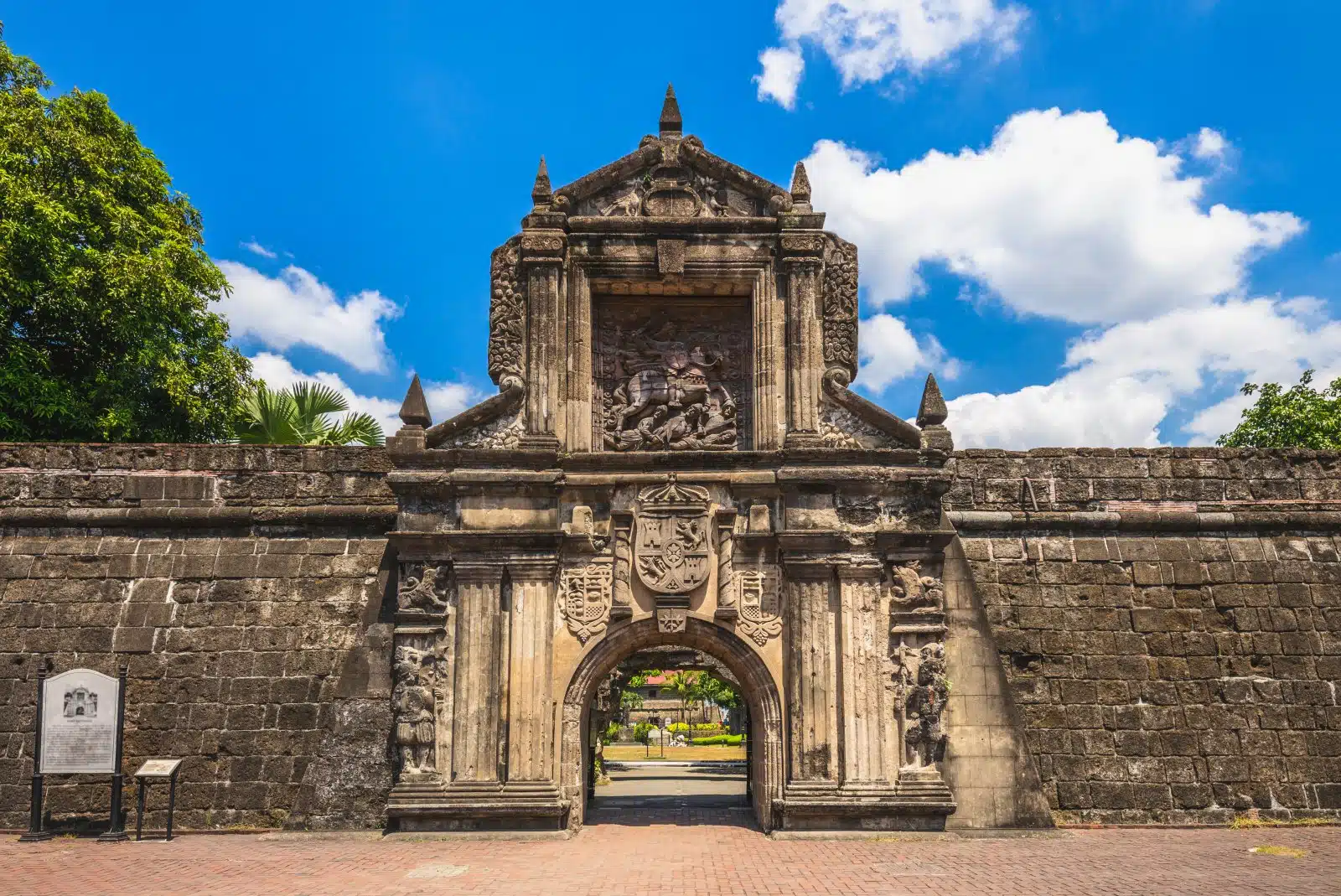
Image Credit: Shutterstock / Richie Chan
Fort Santiago, located in the historic walled city of Intramuros in Manila, Philippines, is a citadel first built by Spanish conquistador Miguel López de Legazpi in the late 16th century. This fortress is part of the structures of the city of Manila, deemed of great historical, cultural, and architectural significance.
Initially constructed in 1571, the fort is named after Saint James the Great (Santiago in Spanish), the patron saint of Spain, and was designed to protect the newly formed city from foreign invasions and pirate attacks. Over the centuries, Fort Santiago has played a crucial role in the country’s history, serving variously as a military barracks, a prison, and a site of numerous significant events in Philippine history.
The fort is perhaps best known for its association with Dr. José Rizal, the Philippines’ national hero, who was imprisoned here before his execution in 1896. His final footsteps from his cell to the location of his execution are marked by bronze footprints, making it a poignant site of pilgrimage for many Filipinos.
Fort Santiago has impressive stone walls and ancient gates, and its location is at the mouth of the Pasig River. Its design incorporates medieval and Renaissance elements, with its defensive structure reflecting the military architectural techniques of the period. Today, it houses the Rizal Shrine Museum, dedicated to the life and works of José Rizal, and features well-preserved dungeons, cannons, and the iconic Rajah Sulayman Theater.
As an important historical and tourist site, Fort Santiago offers visitors insights into the Philippines’ colonial past, the struggle for independence, and the heroism of one of its most revered figures.
San Agustin Church
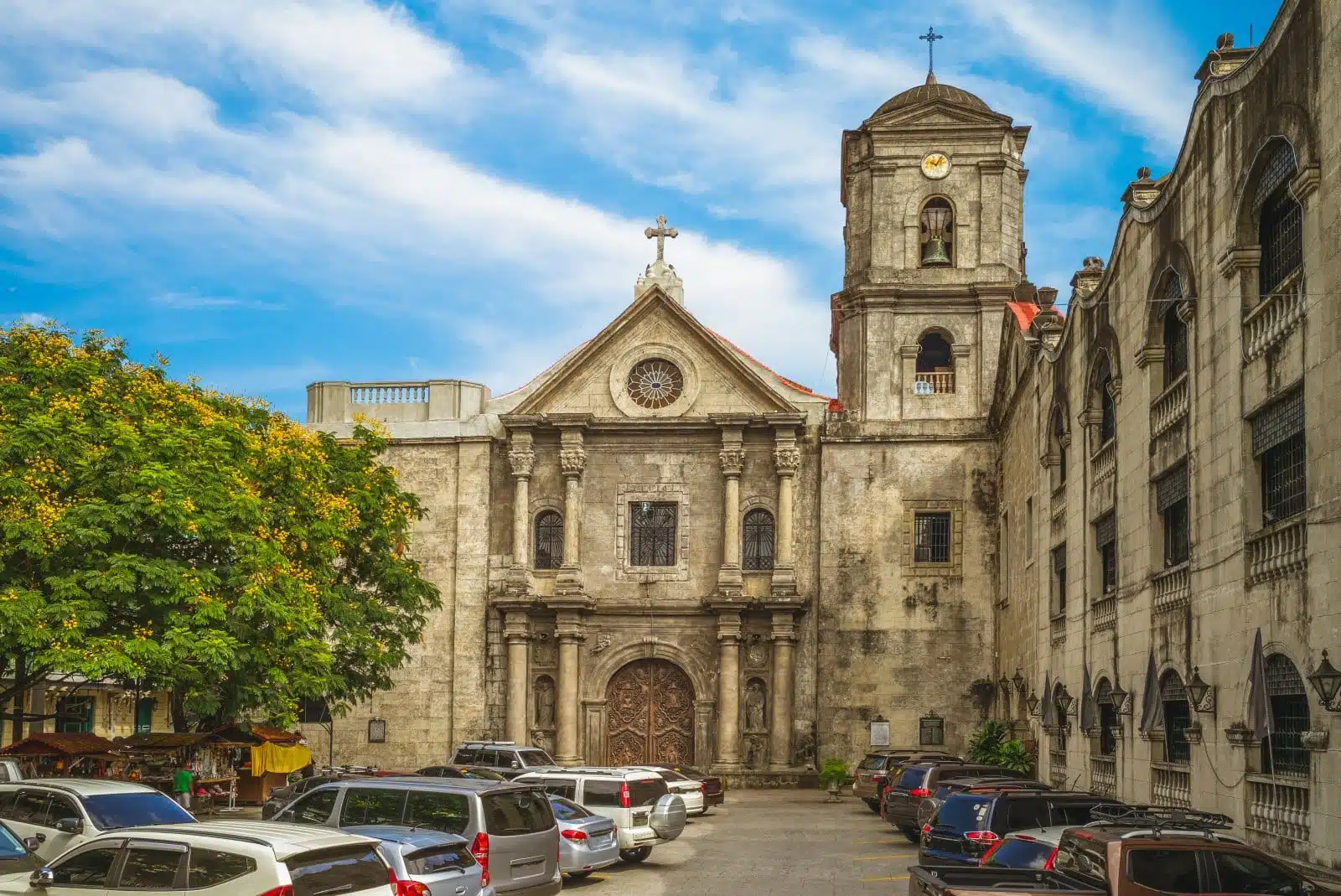
Image Credit: Shutterstock / Richie Chan
San Agustin Church, located within the historic walls of Intramuros in Manila, Philippines, is the oldest stone church in the country, with its construction completed in 1607. This architectural feat is a prime example of Spanish Baroque architecture, reflecting the Philippines’ colonial history and the significant influence of Spanish culture and religion.
Declared a UNESCO World Heritage Site in 1993 as part of the Baroque Churches of the Philippines, San Agustin Church boasts a richly decorated interior, including intricately carved doors, trompe-l’oeil ceilings, and a magnificent altar. The church has survived numerous natural disasters and wars, notably standing firm through the destructive Battle of Manila in 1945, which left much of Intramuros in ruins.
The church also houses a significant collection of religious art and artifacts in its museum, including ecclesiastical vestments, ancient manuscripts, and religious statuary, offering insights into the Philippines’ religious and cultural heritage. The adjacent monastery, now the site of the San Agustin Museum, further enriches the visitor experience with its cloisters, gardens, and extensive art collection.
San Agustin Church’s historical and cultural significance and architectural beauty make it a vital landmark in the Philippines’ historical landscape and a must-visit destination for those interested in the country’s colonial past and religious traditions.
Manila Cathedral
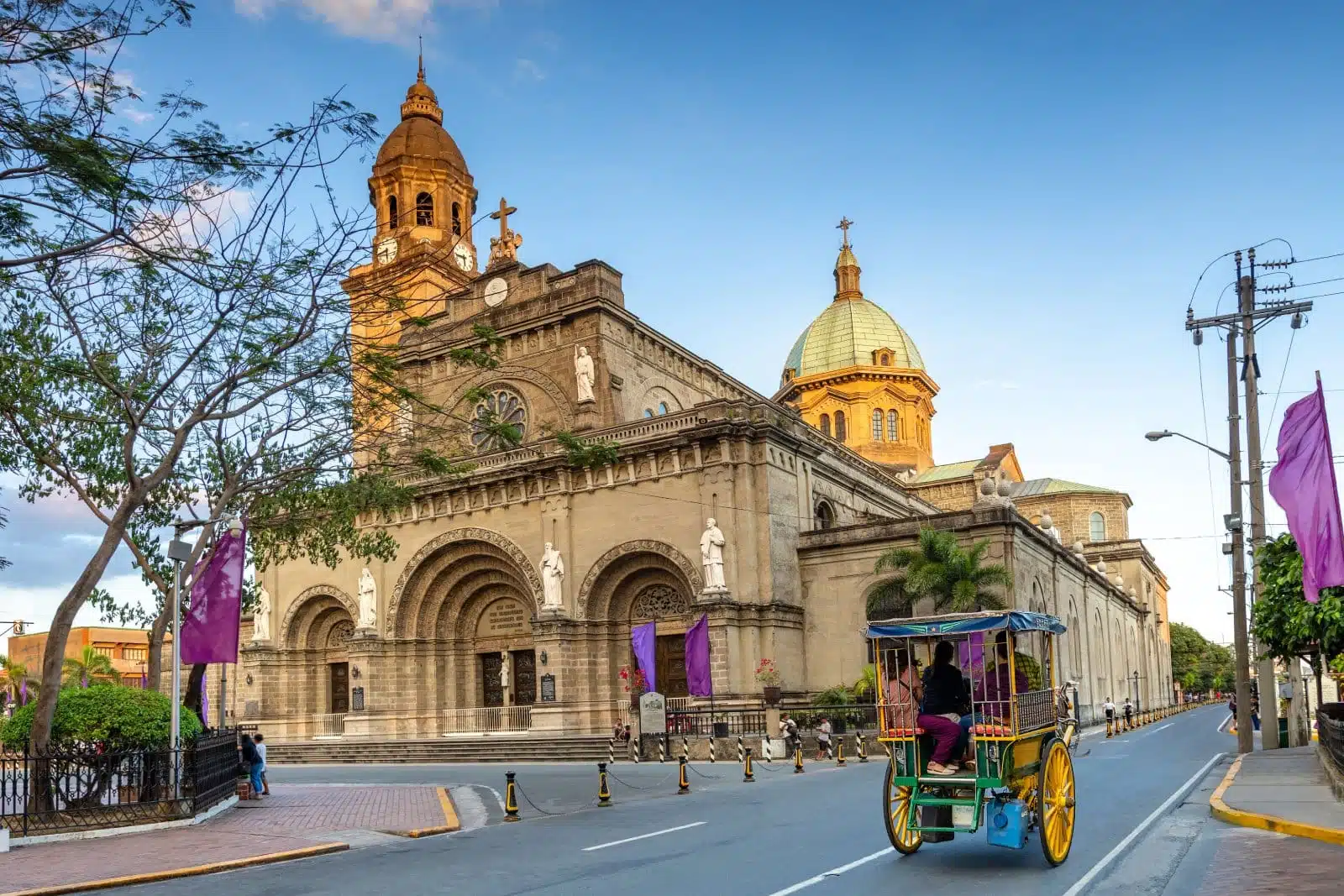
Image Credit: Shutterstock / Sean Hsu
Manila Cathedral, officially known as the Minor Basilica and Metropolitan Cathedral of the Immaculate Conception, is a religious and historical structure in Intramuros, Manila, Philippines. Established in 1571, the cathedral has undergone several reconstructions due to the destruction caused by wars, earthquakes, and typhoons, with the current structure dating back to 1958. This iteration of the cathedral was designed by architect Fernando Ocampo, embodying a blend of Neo-Romanesque and Neo-Byzantine architectural styles, distinguishing it from its predecessors.
The cathedral serves as the episcopal seat of the Archbishop of Manila, marking it as a central figure in the religious life of the Filipino Catholic community. Its facade has intricate stone carvings, stained glass windows depicting biblical scenes, and a prominent central dome that adds to its majestic appearance. Inside, the cathedral houses an array of sacred art, statues, and relics, alongside beautifully crafted altars and a pipe organ from the early 20th century, considered one of the largest in the country.
Manila Cathedral has played a significant role in the religious and cultural history of the Philippines. It has been the venue for important ecclesiastical events, including the consecration of bishops and archbishops and the visitation of several Popes, underscoring its importance within the Catholic Church in Asia.
My Insider’s Tip: For a deeper understanding of Philippine history, consider joining a guided tour of Intramuros. These tours often include visits to lesser-known sites and provide insights into the city’s rich cultural heritage that might otherwise be overlooked.
Rizal Park and National Museum
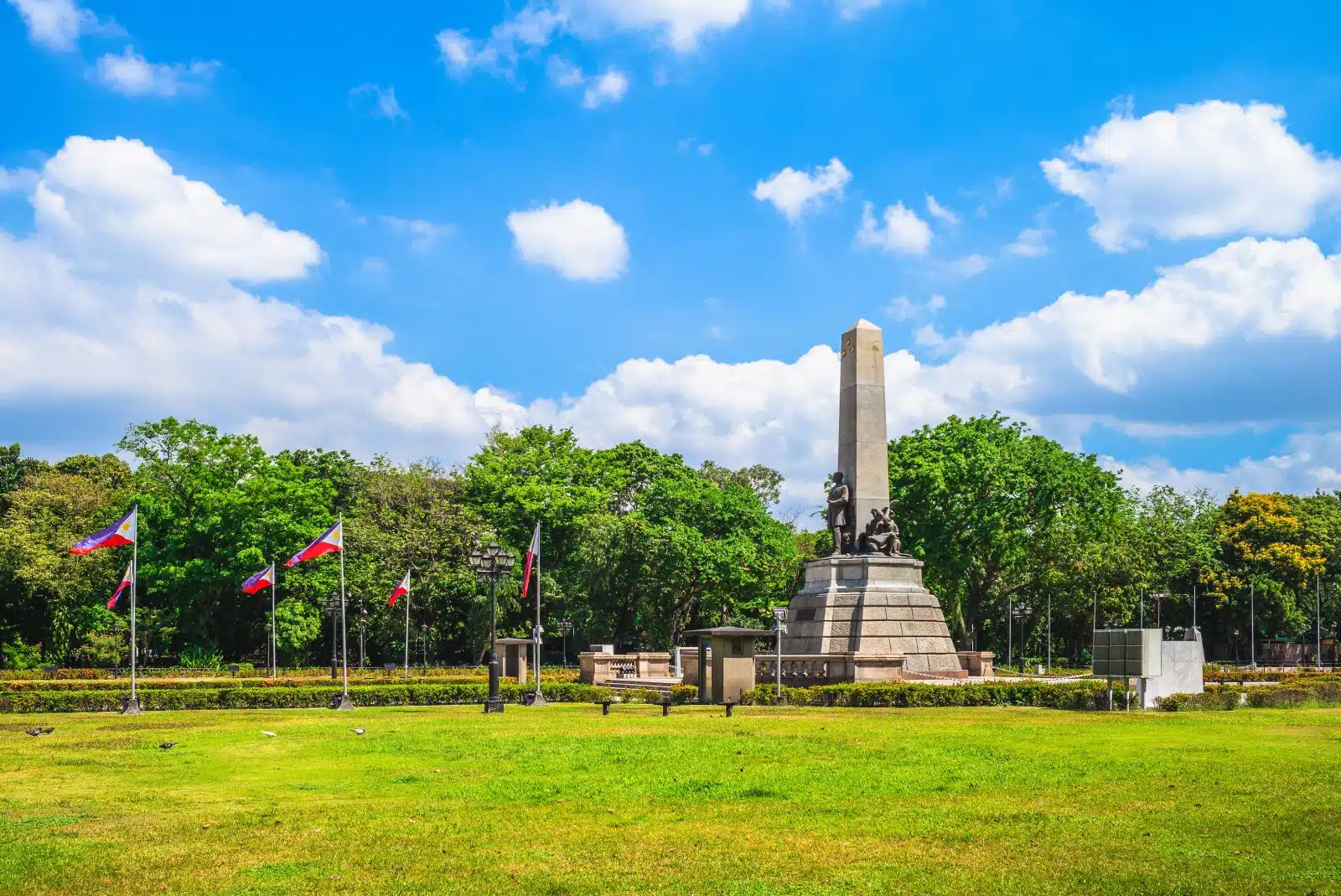
Image Credit: Shutterstock / Richie Chan
Rizal Park, named after the Philippine national hero Dr. José Rizal, is an oasis in the heart of Manila. It serves as a venue for leisure, exercise, and cultural events, with beautifully landscaped gardens, historical markers, and monuments. Adjacent to the park is the National Museum complex, comprising several buildings dedicated to the arts, natural sciences, and history. The National Museum of Fine Arts, in particular, houses a vast collection of Philippine art, including works by renowned artists such as Juan Luna and Félix Resurrección Hidalgo. The National Museum of Anthropology showcases the country’s rich cultural diversity, with artifacts that span the prehistoric to the colonial periods.
Rizal Park
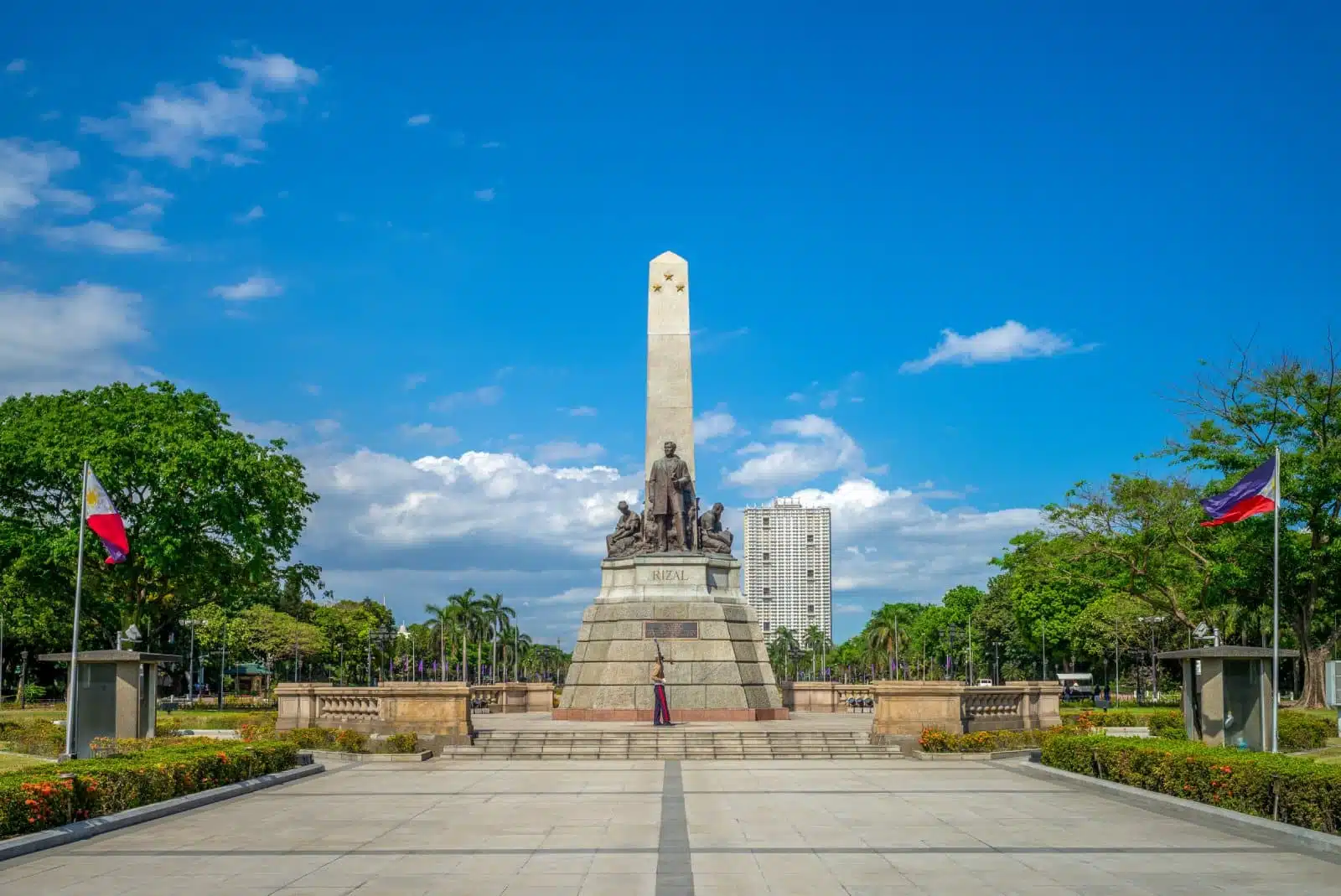
Image Credit: Shutterstock / Richie Chan
Rizal Park, also known as Luneta Park, is a historical urban park in the heart of Manila, Philippines. Spanning approximately 58 hectares, it is one of the largest urban parks in Asia. Named after Dr. José Rizal, the Philippines’ national hero, the park commemorates his execution in 1896, a pivotal moment in the Philippine Revolution against Spanish colonial rule. The park’s centerpiece is the Rizal Monument, which contains the hero’s remains and symbolizes Filipino nationalism and bravery.
Established in the early 1820s as an open space, Rizal Park has become a significant cultural and historical landmark. It serves multiple functions: a leisure and recreational space for residents and tourists, a ceremonial and symbolic venue for national events, and a beautifully green oasis amidst the urban landscape of Manila.
The park features well-manicured gardens, historical markers, museums, an open-air concert hall, and monuments dedicated to other Filipino heroes and historical events. Notable attractions within the park include the National Museum of the Philippines, the National Library, the Planetarium, and the beautifully landscaped Japanese and Chinese Gardens.
The National Museum of the Philippines
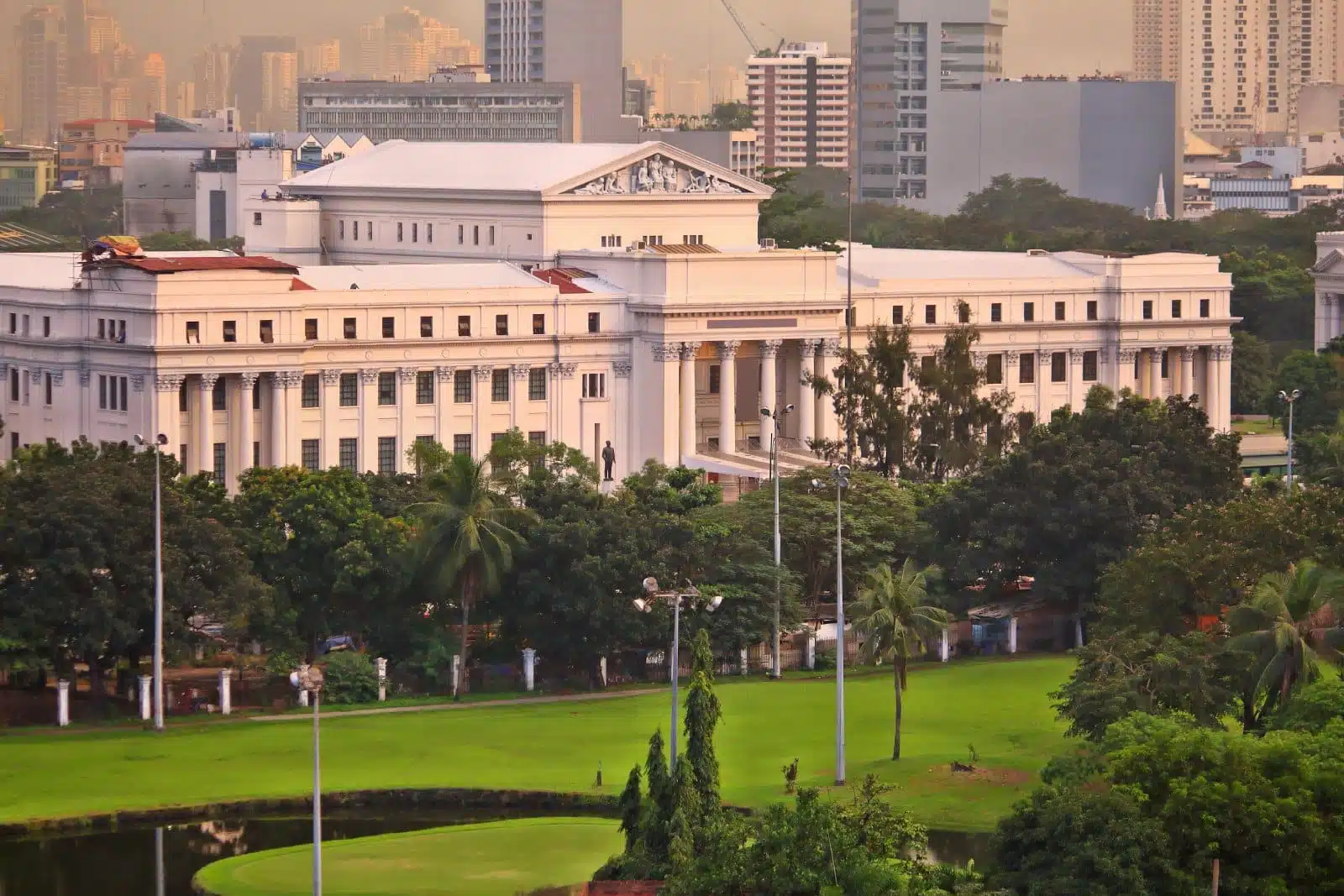
Image Credit: Shutterstock / Tupungato
The National Museum of the Philippines, established in 1901, is the primary institution for preserving, documenting, and exhibiting the Philippines’ cultural, historical, and natural heritage. The museum complex comprises several buildings dedicated to disciplines such as fine arts, anthropology, natural history, and planetarium sciences, making it a comprehensive repository of the Filipino legacy.
The National Museum of Fine Arts, formerly the National Art Gallery, houses an extensive collection of Philippine art spanning several centuries, showcasing works from the Spanish colonial period to contemporary times. It is home to notable pieces such as Juan Luna’s “Spoliarium” and Felix Resurreccion Hidalgo’s “El Asesinato del Gobernador Bustamante,” among others, which play a crucial role in the nation’s artistic narrative.
Adjacent to the Fine Arts building, the National Museum of Anthropology (formerly the Museum of the Filipino People) features an array of ethnographic and archaeological exhibits that explore the Filipino people’s diverse cultures, traditions, and practices from prehistoric times.
The National Museum of Natural History, the newest addition to the complex, offers insights into the Philippines’ unique biodiversity and ecological systems. It displays a wide range of specimens, including flora, fauna, and geological formations, highlighting the country’s rich natural environment and the importance of its conservation.
The Planetarium, another integral part of the National Museum, provides educational programs and shows that promote astronomy and space science, further enriching the museum’s multidisciplinary approach to learning and discovery.
My Insider’s Tip: Admission to the National Museum of the Philippines is free, making it an accessible option for travelers keen on exploring the country’s heritage without spending extra.
Binondo Food Trip
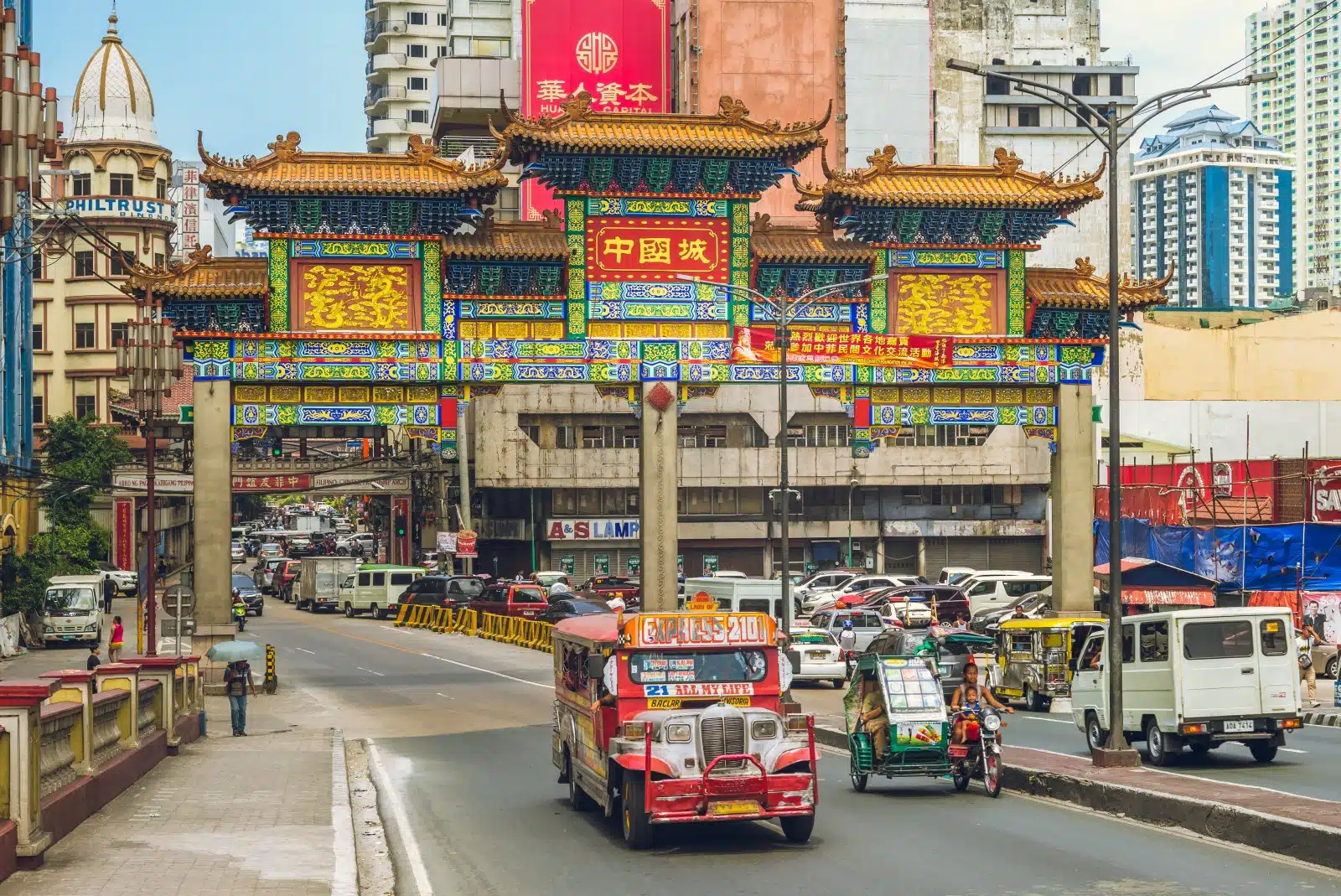
Image Credit: Shutterstock / Richie Chan
Binondo, established in 1594, is recognized as the world’s oldest Chinatown, located in the heart of Manila, Philippines. The Spanish founded this historic district as a settlement for Catholic Chinese, and it has since evolved into a vibrant commercial and cultural hub, reflecting a rich blend of Filipino and Chinese influences. Binondo’s intricate network of streets and alleys teems with shops, restaurants, and vendors, offering an array of goods from traditional Chinese medicine to gold jewelry and various culinary delights.
The area is renowned for its unique culinary scene, where traditional Chinese cuisine meets Filipino flavors, resulting in a diverse gastronomic experience. Notable food destinations include Ongpin Street, known for its authentic Chinese restaurants and bakeries serving delicacies such as dim sum, noodles, and hopia. With its distinctive octagonal bell tower, the Binondo Church highlights the district’s historical and religious significance, serving the spiritual needs of its predominantly Chinese Catholic community.
Binondo’s economic activity centers mainly on family-owned businesses and trade, contributing significantly to Manila’s economy. The district’s narrow streets are lined with various shops and stalls, offering everything from textiles to hardware, showcasing the entrepreneurial spirit of its residents.
In recent years, Binondo has experienced a resurgence of interest as a cultural and tourist destination. Efforts to preserve its historical landmarks and revitalize its streets have attracted locals and tourists to explore its rich heritage and traditions. Walking tours, cultural festivals, and the annual Chinese New Year celebration highlight Binondo’s vibrant community life and its role as a living museum of Filipino-Chinese history.
My Insider’s Tip: Venture beyond the main streets and explore Binondo’s side alleys. Here, you’ll find hidden culinary gems and traditional shops serving loyal customers for generations.
Mall of Asia or Cultural Show
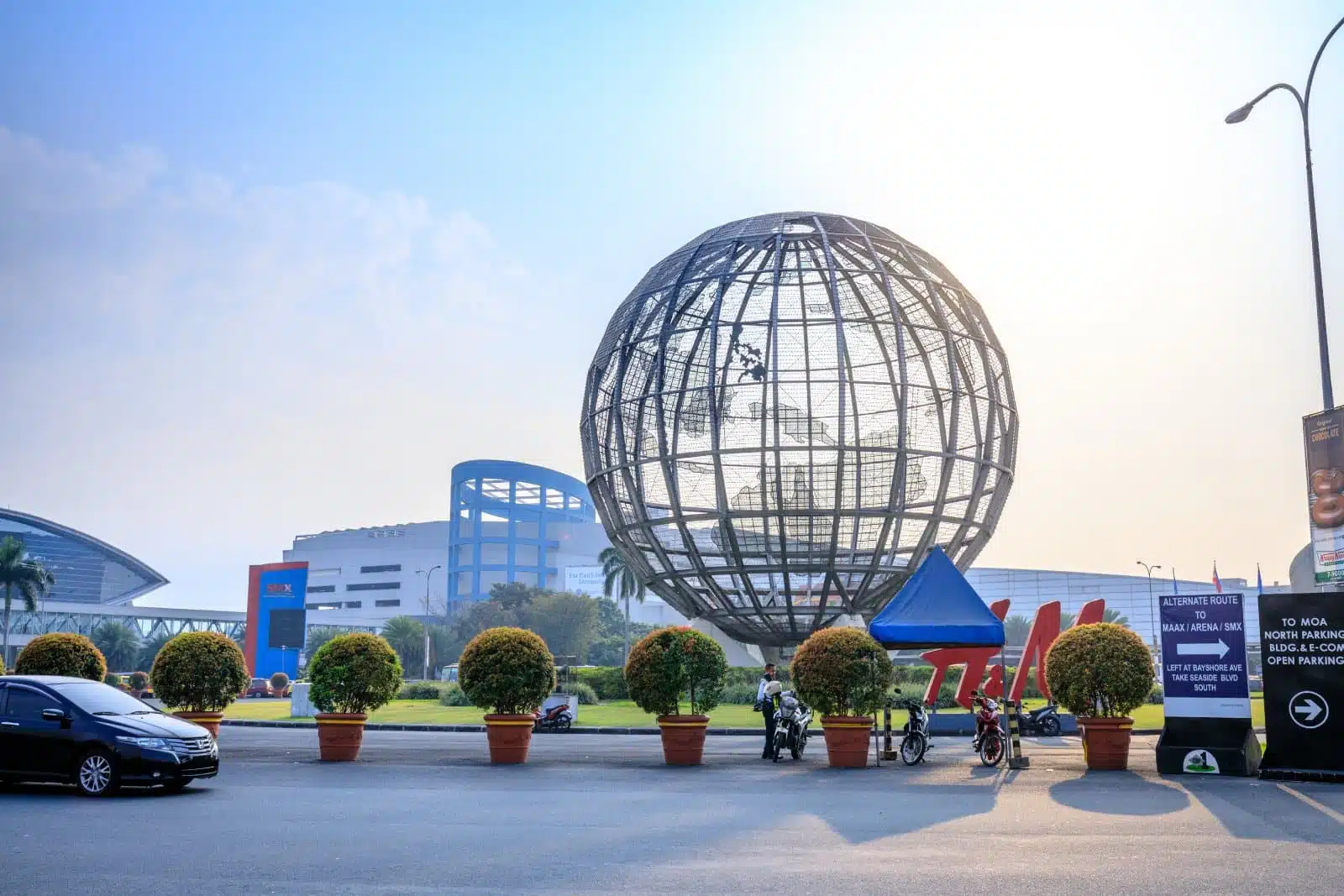
Image Credit: Shutterstock / ARTYOORAN
The SM Mall of Asia, commonly called MOA, is a vast shopping, entertainment, and dining complex in Bay City, Pasay. Since its opening in 2006, it has become one of the largest malls in the Philippines and is among the biggest shopping centers in Asia. Developed by SM Prime Holdings, the leading mall operator in the country, MOA spans a total gross floor area of approximately 432,891 square meters, making it a pivotal landmark in the region.
The Mall of Asia complex is distinguished by its comprehensive range of retail outlets, including numerous local and international brands across fashion, electronics, home furnishings, and more. Beyond retail, MOA features various dining options, from fast food to gourmet restaurants, catering to diverse tastes and preferences. The mall is also known for its entertainment facilities, which include a state-of-the-art IMAX theater, an Olympic-sized ice skating rink, and the MOA Arena.
Architecturally, the mall incorporates open spaces and waterfront areas, offering visitors scenic views of Manila Bay. Its design facilitates natural ventilation and ample sunlight, enhancing the shopping experience. The SM Mall of Asia’s iconic globe and the seaside promenade are popular spots for locals and tourists, providing a picturesque backdrop for leisure and social gatherings.
My Insider’s Tip: Check the CCP’s schedule to catch a live performance. These shows are a fantastic way to experience the Philippines’ rich artistic traditions.
Manila Bay Sunset and Dinner: Roxas Boulevard
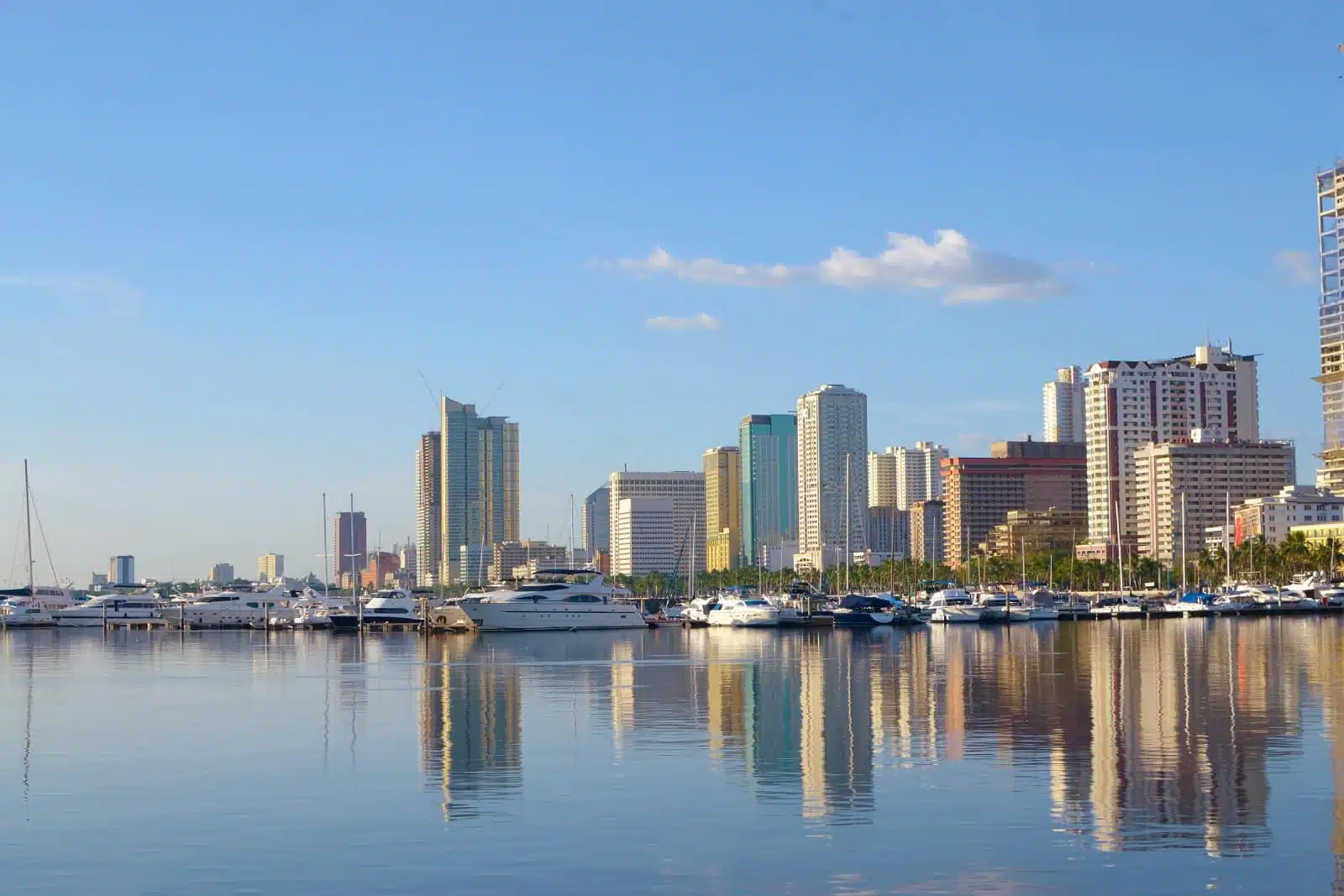
Image Credit: Shutterstock / Jomar Aplaon
Roxas Boulevard is a historic waterfront promenade stretching approximately 7.6 kilometers along the shores of Manila Bay. Named after President Manuel Roxas, the boulevard is one of the city’s major arteries, connecting the cultural and entertainment district of Manila with the cities of Pasay and Parañaque to the south. Known for its picturesque sunsets and coconut tree-lined sidewalks, Roxas Boulevard serves as a scenic backdrop for leisure and commerce, embodying the vibrant spirit of the Philippine capital.
A mix of old and new structures, including government offices, embassies, hotels, commercial establishments, and cultural venues flanks the boulevard. Notable landmarks along Roxas Boulevard include the Cultural Center of the Philippines Complex, which houses various arts and performance venues; the historic Manila Hotel; and Rizal Park, one of the largest urban parks in Asia. The area is also popular for outdoor activities, such as jogging, biking, and leisurely walks, especially during the early morning and late afternoon when the Manila Bay sunset creates a breathtaking view.
Over the years, Roxas Boulevard has undergone several redevelopment projects to enhance its role as a key urban space that supports cultural, recreational, and economic activities. Efforts to preserve the beauty of Manila Bay and improve the boulevard’s infrastructure reflect the city’s commitment to maintaining its historical significance while adapting to modern urban demands.
Insider’s Tip: Arrive early to secure a spot along the Baywalk for the best sunset views. It’s a popular spot, especially on clear days.
Le Bar
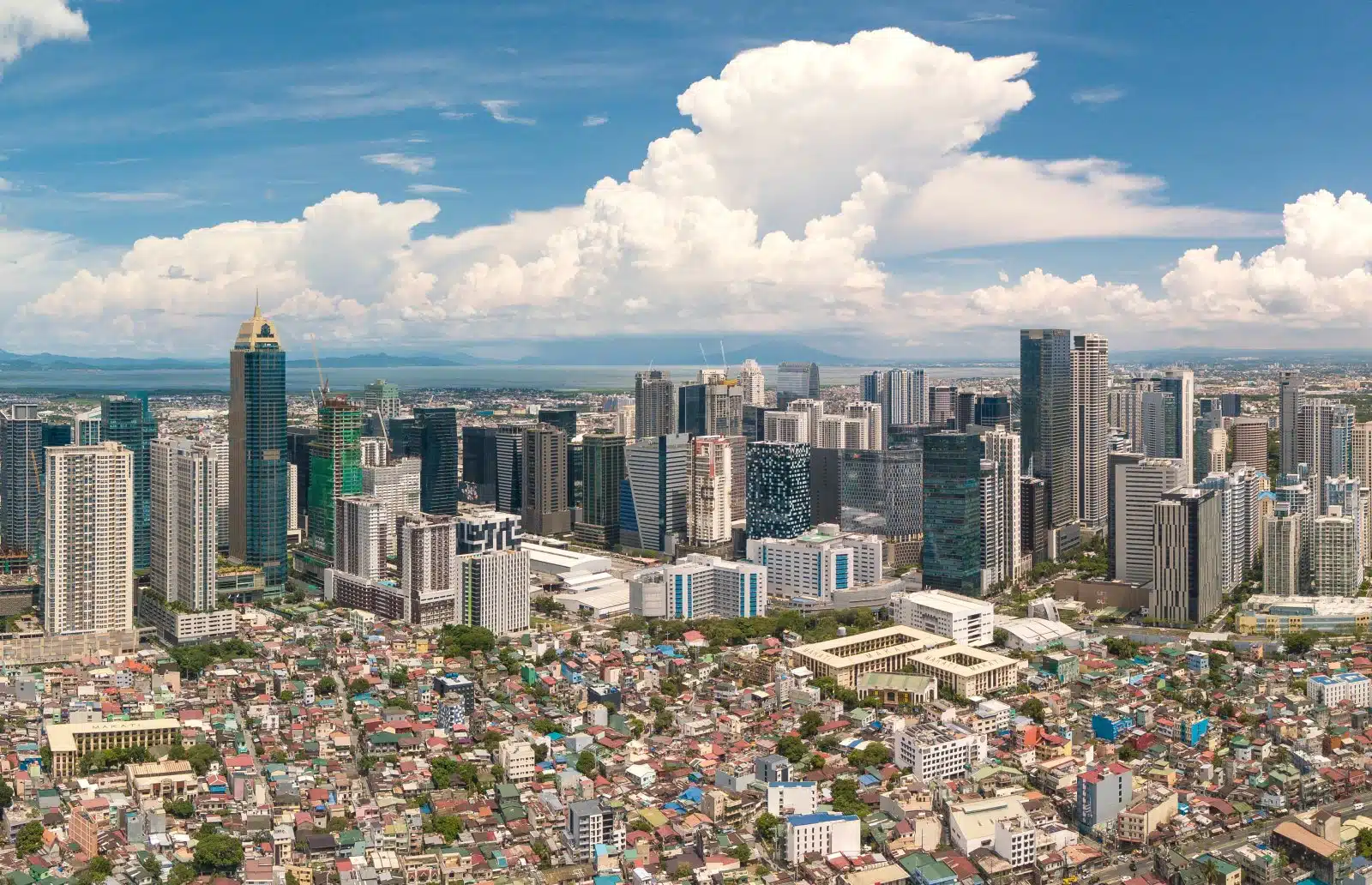
Image Credit: Shutterstock / MDV Edwards
Le Bar, situated within the prestigious Sofitel Philippine Plaza Manila, is a distinctive venue that combines the elegance of a Parisian bistro with the relaxed ambiance of a cosmopolitan lounge. This sophisticated space offers guests a unique dining and leisure experience, blending French culinary artistry with the warmth of Filipino hospitality. Le Bar’s interior is characterized by its stylish décor. It harmoniously integrates modern design elements with classic touches, creating an inviting atmosphere that appeals to international travelers and local patrons.
The menu at Le Bar features a selection of French-inspired dishes alongside Filipino favorites, all prepared with the highest quality ingredients. Guests can indulge in various offerings, from light snacks and gourmet meals to an extensive array of beverages, including fine wines, signature cocktails, and artisan coffees. The dining experience is further enhanced by the venue’s attentive service, ensuring a memorable visit for every guest.
Le Bar is divided into three distinct areas: the library, the bistro, and the Galette – a patisserie and chocolaterie. Each section offers a different ambiance, making Le Bar a versatile destination for casual meetings, intimate dinners, or relaxing afternoons spent enjoying pastries and coffee. The library, with its plush seating and book-lined walls, provides a cozy retreat; the bistro area offers a vibrant dining experience; and the Galette tempts guests with its exquisite selection of sweets and baked goods.
Overnight at Sofitel Philippine Plaza Manila
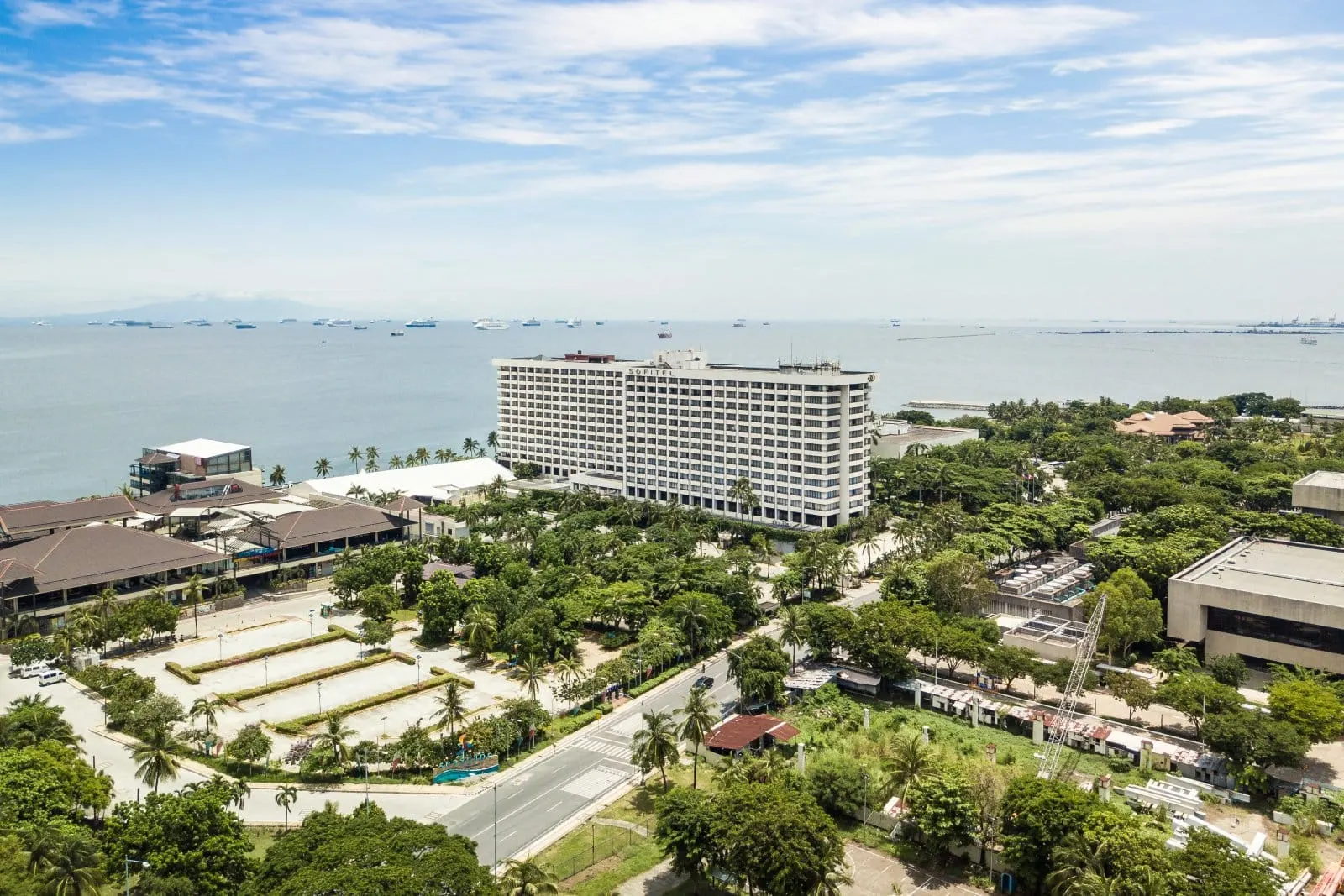
Image Credit: Shutterstock / MDV Edwards
Sofitel Philippine Plaza Manila is a five-star luxury hotel in Pasay City, Manila’s cultural and entertainment complex. The hotel is situated near Manila Bay and offers panoramic views of the bay and its famous sunsets, providing a tranquil escape within the bustling metropolis. Designed by National Artists Leandro Locsin and Ildefonso P. Santos, the hotel seamlessly blends French elegance with Filipino craftsmanship, making it a distinguished landmark in the city.
The hotel features 609 rooms and suites, each elegantly furnished and equipped with modern amenities to ensure a comfortable and luxurious stay. The accommodations cater to business and leisure travelers, offering spacious layouts, high-speed internet access, and sophisticated in-room technology.
A Potted History of Manila
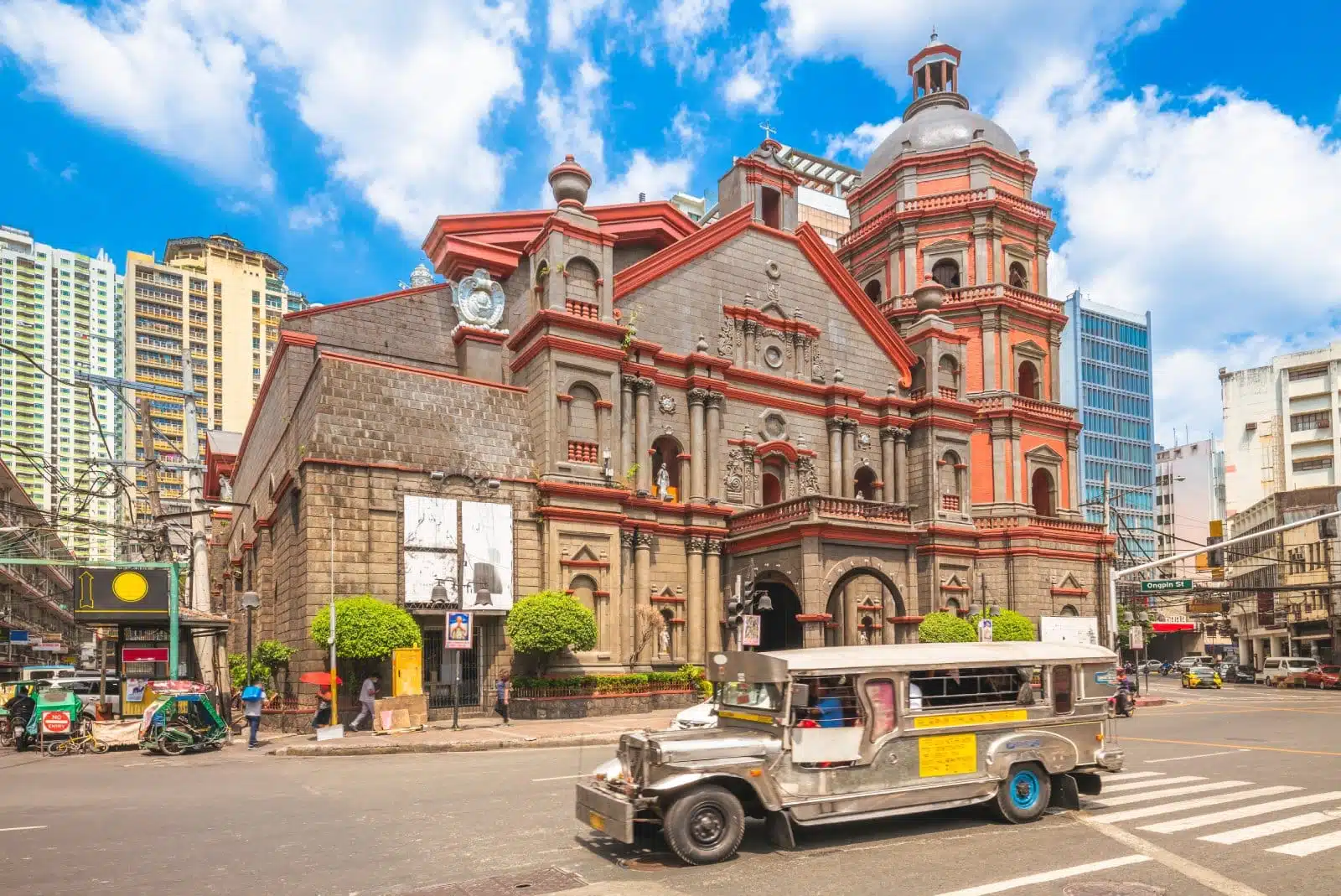
Image Credit: Shutterstock / Richie Chan
The history of Manila reflects the country’s complex past, marked by diverse influences from indigenous, Asian, and Western cultures.
Before the arrival of Spanish explorers in the 16th century, Manila was a thriving settlement by the bay, inhabited by various indigenous groups. The area was known for its strategic trading position, facilitating commerce among local tribes and traders from China, India, and the Islamic sultanates of Southeast Asia. The Pasig River, which flows through Manila, was vital for trade and transportation.
Manila’s history as a colonial city began in 1571 when Spanish conquistador Miguel López de Legazpi declared it the capital of the Spanish East Indies. The Spaniards fortified the city by constructing Intramuros, a walled city that served as the administrative and religious center. Manila became a pivotal point in the Galleon Trade, linking Asia with the Americas. The city’s port facilitated the exchange of goods such as silk, spices, silver, and other valuable commodities, making it one of the world’s first global cities.
The Spanish period also saw the introduction of Christianity, the establishment of the Philippines’ oldest universities, and the construction of iconic churches. However, this era was also marked by social inequalities, uprisings, and challenges to Spanish rule.
Following the Spanish-American War, the Treaty of Paris (1898) ceded the Philippines to the United States. Manila underwent significant changes under American rule, including introducing public education, public health, and infrastructure improvements, as well as the expansion of the city beyond the walls of Intramuros. The Americans established a new government structure and promoted democratic ideals, although full independence was not immediately granted.
World War II brought devastation to Manila, particularly during the Battle of Manila in 1945, which resulted in extensive destruction and loss of life. The city was one of World War II’s most heavily damaged Allied capitals.
The Philippines gained independence on July 4, 1946, with Manila being declared the capital of the newly sovereign nation. The post-war period was a time of rebuilding and modernization. Under the leadership of various presidents, Manila saw the construction of new roads, buildings, and cultural landmarks. The city was central to the country’s political, social, and economic life.
The declaration of Martial Law in 1972 by President Ferdinand Marcos led to a period of political repression and violence. Manila was the center of opposition against the Marcos regime, culminating in the People Power Revolution of 1986. This peaceful uprising, which took place along EDSA, a major thoroughfare in Metro Manila, restored democracy in the Philippines.
Manila is a vibrant urban center, reflecting historical influences and modernity. It faces challenges such as traffic congestion, urban poverty, and environmental issues but remains a vital political, economic, and cultural hub in the Philippines. The city continues to evolve, striving to address the needs of its inhabitants while preserving its rich historical heritage.
The People of the Philippines

Image Credit: Shutterstock / Richard Noel Amora
The people of the Philippines, known as Filipinos, are the citizens of the Republic of the Philippines, a Southeast Asian country comprising more than 7,600 islands. The population of the Philippines is diverse, with more than 100 ethno-linguistic groups identified across the archipelago. This diversity results from the country’s complex migration, trade, and colonization history.
Filipinos are known for their hospitality, resilience, and strong family values. The family unit is at the core of Filipino society, often including extended family members in close-knit communal relationships. Respect for elders and a strong sense of community are hallmark traits of Filipino culture.
The Philippines has a rich cultural heritage that reflects both indigenous traditions and influences from Spanish, American, and Asian cultures. This blend is evident in the country’s arts, cuisine, festivals, and religious practices. Christianity, particularly Roman Catholicism, was the predominant religion Spanish colonizers brought in the 16th century. However, Islam and indigenous beliefs are also practiced, especially in the southern regions and among tribal communities.
Filipinos have a strong national identity shaped by centuries of struggle for independence and sovereignty. The country’s history is marked by resistance against Spanish, American, and Japanese rule, culminating in the establishing of the Republic of the Philippines in 1946.
The official languages of the Philippines are Filipino, based on Tagalog and English, reflecting the country’s colonial history and its current engagement in global affairs. The education system and government operations utilize both languages, making the Philippines one of the largest English-speaking countries in the world.
Economically, the Philippines is classified as an emerging market, with growth driven by manufacturing, services, and remittances from overseas Filipino workers. The Filipino diaspora is significant, with millions living and working abroad, contributing to the global Filipino community and the country’s economy through remittances.
When to Travel

Image Credit: Shutterstock / Prostock-studio
The best time to visit Manila is between November and February when the weather is cooler and less humid, making outdoor exploration more comfortable.
How to Get There
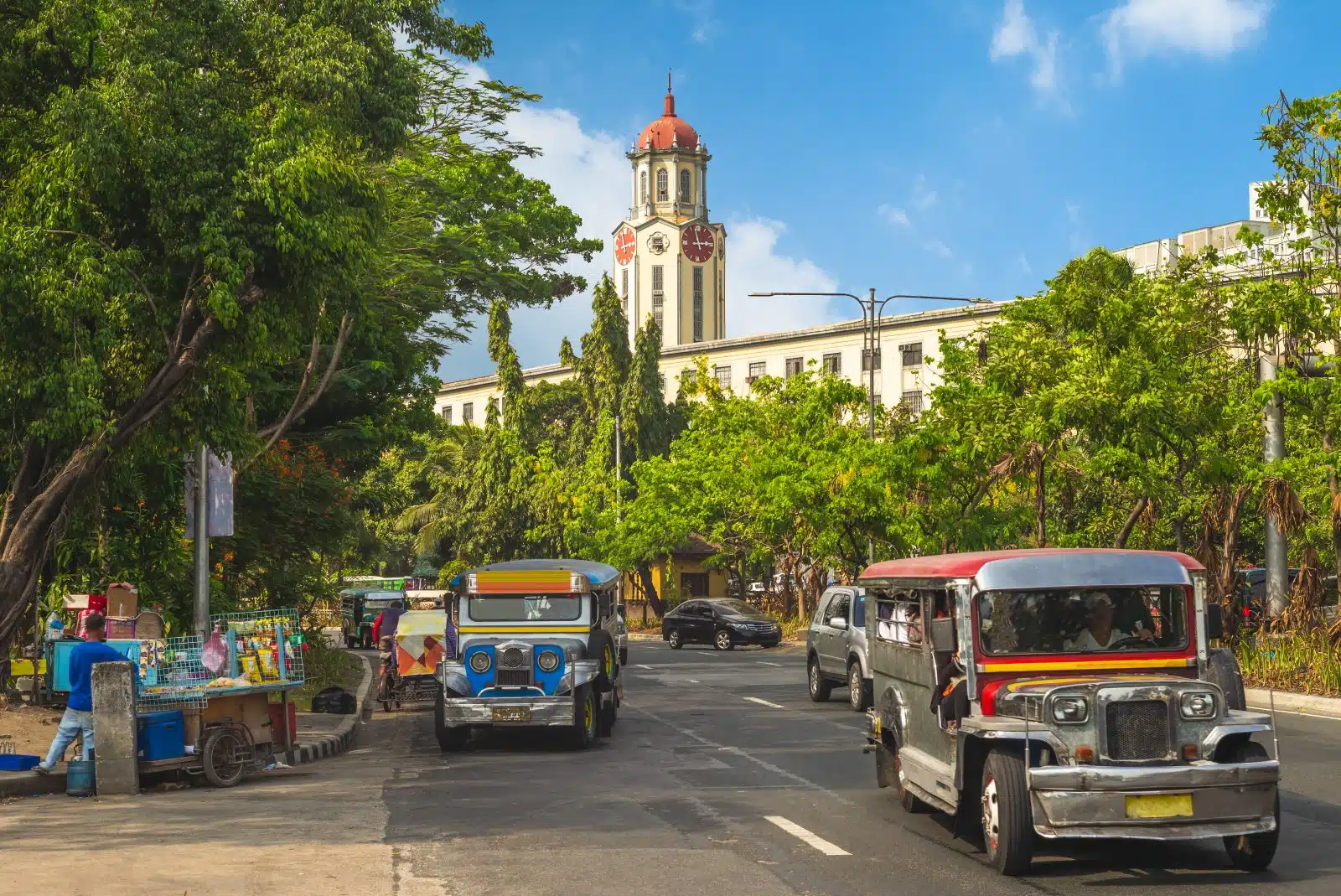
Image Credit: Shutterstock / Richie Chan
Manila is accessible via the Ninoy Aquino International Airport (NAIA), the main gateway to the Philippines. The city is well-connected by public transportation, including the LRT and MRT, jeepneys, and taxis, providing various options for getting around.
The Bottom Line
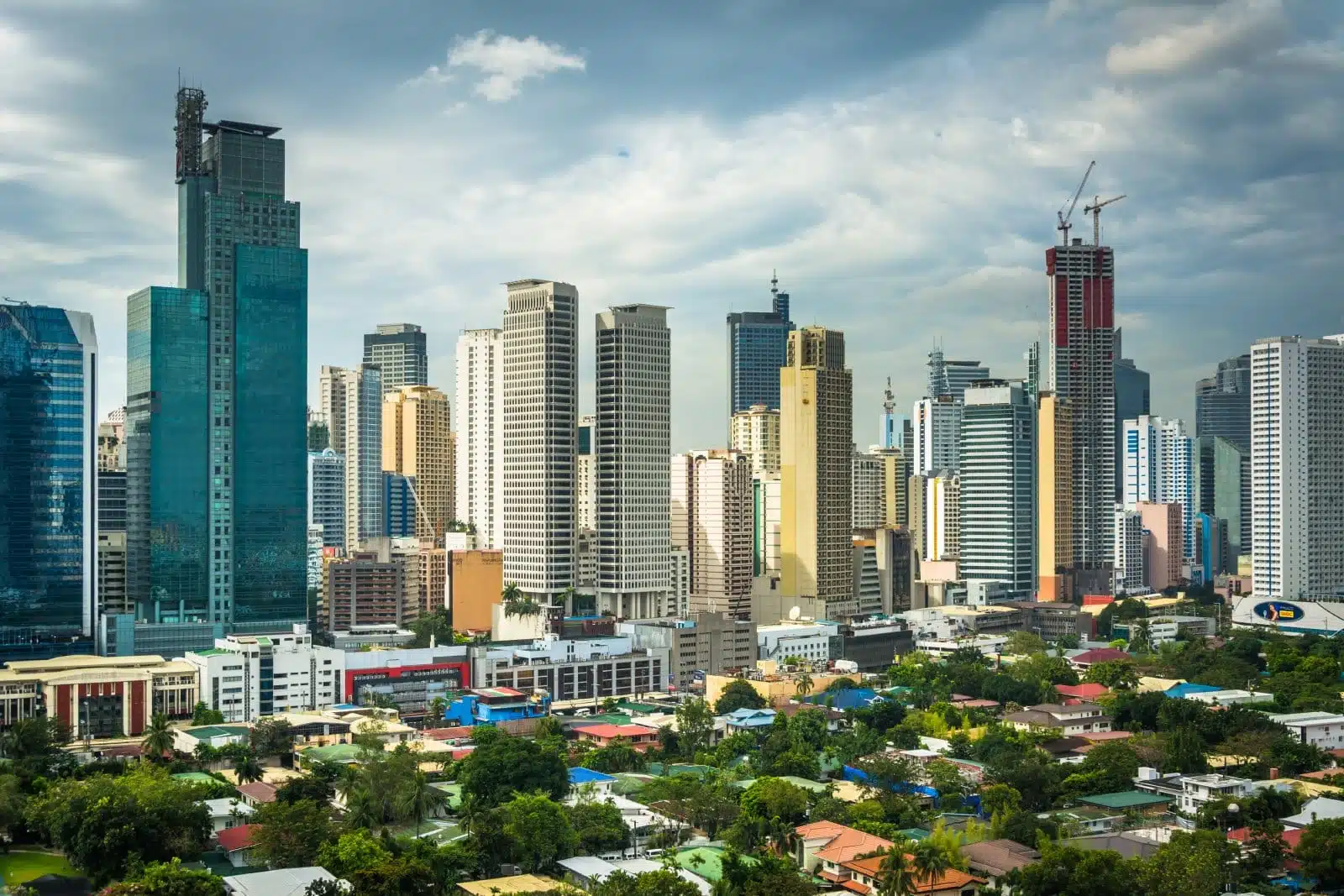
Image Credit: Shutterstock / Jon Bilous
Your day in Manila is a journey through time, from the historic walls of Intramuros to the modern expanse of the Mall of Asia. It showcases the city’s ability to preserve its heritage while embracing progress. As you explore, remember to stay hydrated, respect local customs, and plan your transportation wisely to navigate the city’s bustling streets efficiently.
More From The Green Voyage
Top 10 Trending Travel Destinations 2024
6 Essential Banking Apps for International Travel – Managing Your Finances on the Go
Traveling With Kids – 10 Tips to Create Memorable Family Holidays
The post One Day in…Manila, Philippines first appeared on The Green Voyage.
Featured Image Credit: Shutterstock / joyfull.
For transparency, this content was partly developed with AI assistance and carefully curated by an experienced editor to be informative and ensure accuracy.
